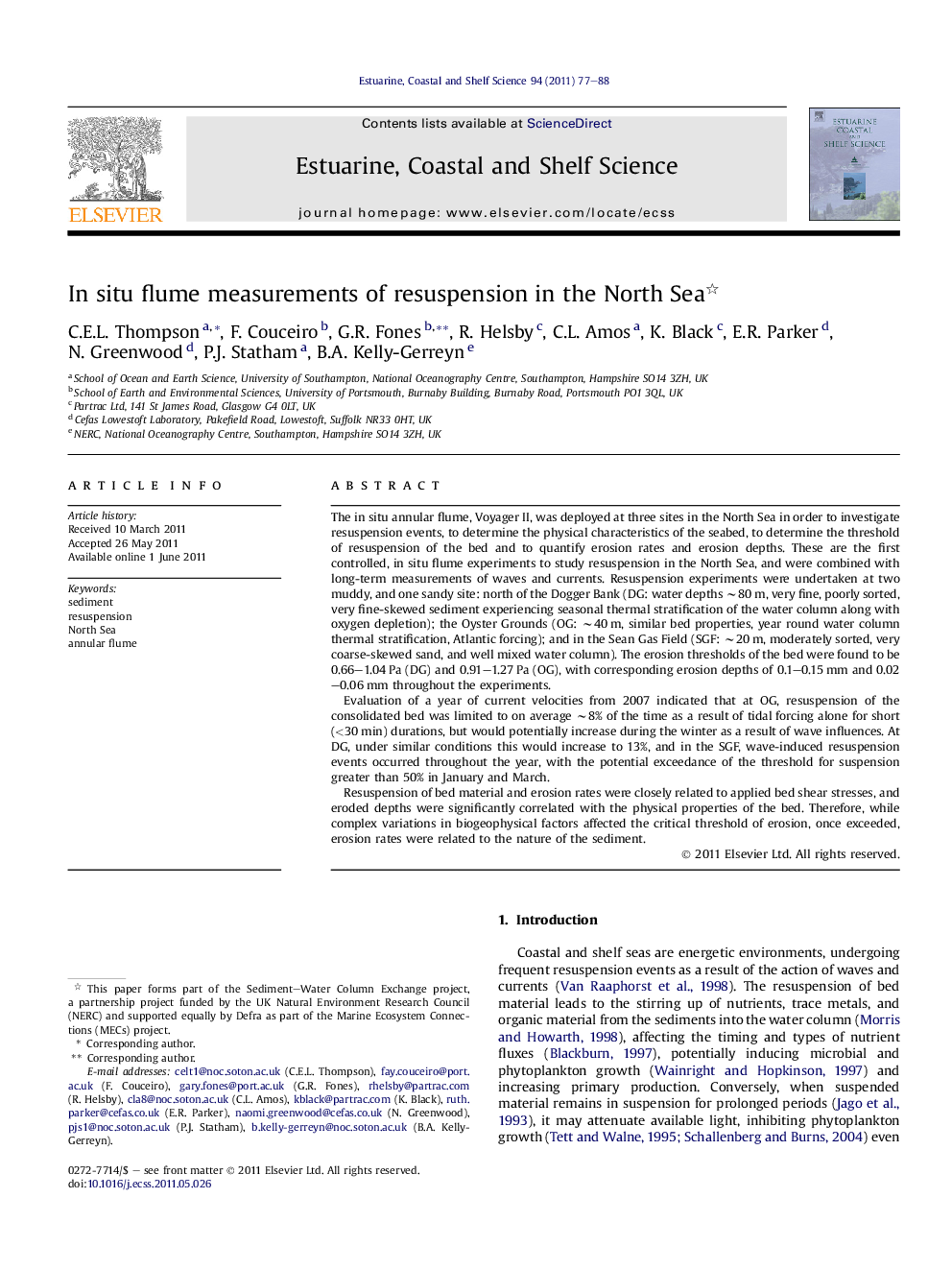| کد مقاله | کد نشریه | سال انتشار | مقاله انگلیسی | نسخه تمام متن |
|---|---|---|---|---|
| 4540548 | 1326675 | 2011 | 12 صفحه PDF | دانلود رایگان |

The in situ annular flume, Voyager II, was deployed at three sites in the North Sea in order to investigate resuspension events, to determine the physical characteristics of the seabed, to determine the threshold of resuspension of the bed and to quantify erosion rates and erosion depths. These are the first controlled, in situ flume experiments to study resuspension in the North Sea, and were combined with long-term measurements of waves and currents. Resuspension experiments were undertaken at two muddy, and one sandy site: north of the Dogger Bank (DG: water depths ∼80 m, very fine, poorly sorted, very fine-skewed sediment experiencing seasonal thermal stratification of the water column along with oxygen depletion); the Oyster Grounds (OG: ∼40 m, similar bed properties, year round water column thermal stratification, Atlantic forcing); and in the Sean Gas Field (SGF: ∼20 m, moderately sorted, very coarse-skewed sand, and well mixed water column). The erosion thresholds of the bed were found to be 0.66–1.04 Pa (DG) and 0.91–1.27 Pa (OG), with corresponding erosion depths of 0.1–0.15 mm and 0.02–0.06 mm throughout the experiments.Evaluation of a year of current velocities from 2007 indicated that at OG, resuspension of the consolidated bed was limited to on average ∼8% of the time as a result of tidal forcing alone for short (<30 min) durations, but would potentially increase during the winter as a result of wave influences. At DG, under similar conditions this would increase to 13%, and in the SGF, wave-induced resuspension events occurred throughout the year, with the potential exceedance of the threshold for suspension greater than 50% in January and March.Resuspension of bed material and erosion rates were closely related to applied bed shear stresses, and eroded depths were significantly correlated with the physical properties of the bed. Therefore, while complex variations in biogeophysical factors affected the critical threshold of erosion, once exceeded, erosion rates were related to the nature of the sediment.
► Erosion thresholds, rates and depths were measured using an in situ annular flume.
► Local resuspension most likely driven by waves events.
► Complex variations in biogeophysical factors affect critical threshold of erosion.
► Erosion rates more directly related to nature of sediment.
Journal: Estuarine, Coastal and Shelf Science - Volume 94, Issue 1, 30 July 2011, Pages 77–88